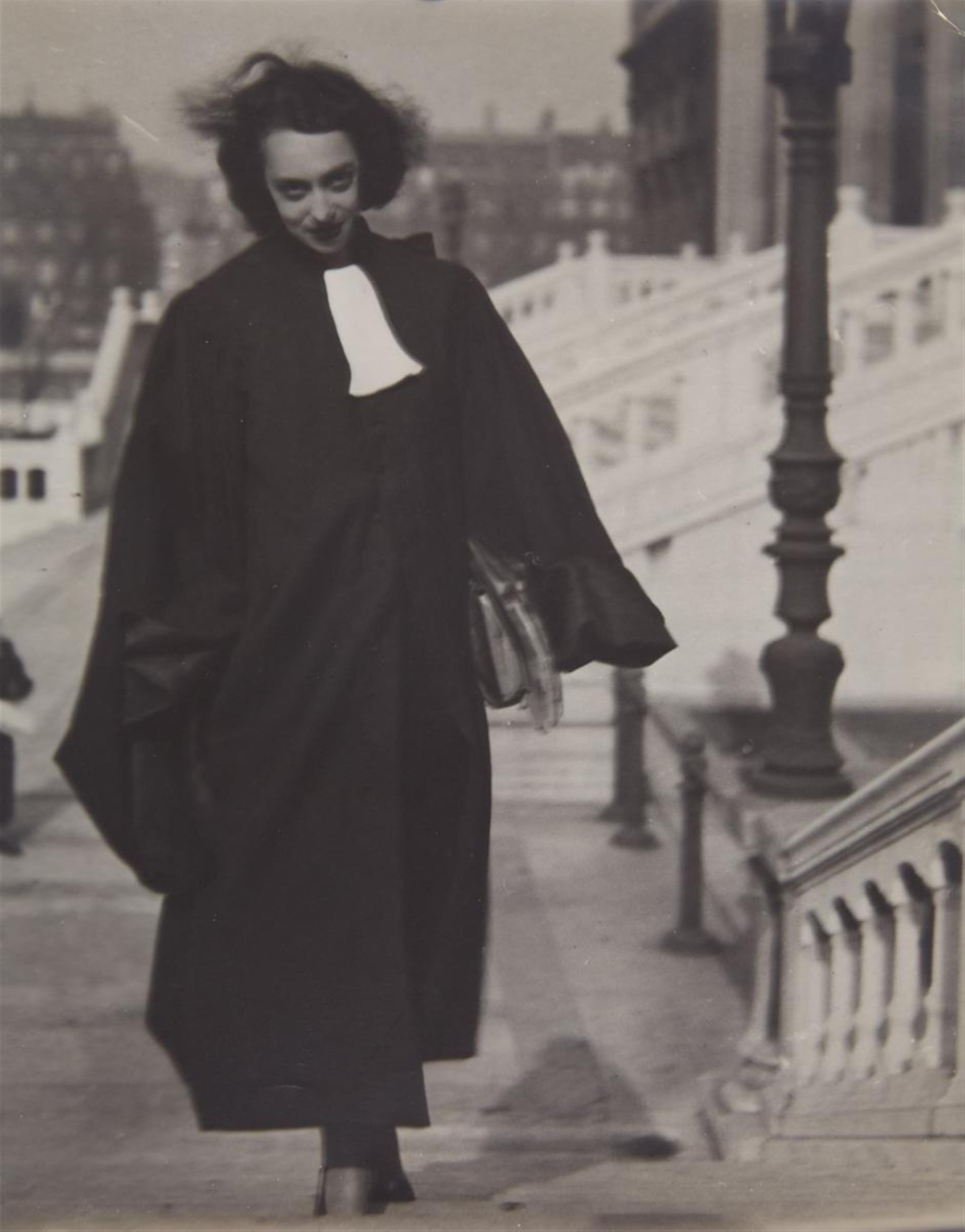Josef Breitenbach
Lawyer, Paris
1933-39
Vintage gelatin silver print. 29.8 x 23.8 cm. Inscribed "Dr. S.A." in pencil on the verso. - Small fold at the upper right corner..
Josef Breitenbach (1896 - 1984) was already in his mid-thirties when he opened his own photo studio in Munich. As the son of a Jewish wine wholesaler, he first took over his parent's business, but as an autodidact he had also been engaged in photography from an early age and participated in competitions and exhibitions for amateur photographers. His close contacts with the Munich artist and literati scene - which went back to his time with the pacifist youth movement during the First World War and his time in the republic of councils of 1918/19 - helped him in getting his first commissions as a portrait photographer. In the autumn of 1932, he was employed at the Munich Kammerspiele but he emigrated to Paris - shortly after the coming into power of the National Socialists - where he was admitted to the artistic circle surrounding André Breton and exhibited together with Man Ray, Brassaï, Eli Lotar and Henri Cartier-Bresson. Here, Breitenbach took pictures of emigrated artist colleagues such as Helene Weigel, Bert Brecht, Max Ernst and Lyonel Feininger and participated in several solo as well as group exhibitions. In 1938, he was expatriated. In 1941, Breitenbach managed to emigrate to the USA via Marseille where he devoted himself to reporting and documentary photography and also worked as a photographer for various UN organisations.
The pictures shown here, most of which are vintage copies, originate from the early 1930s - when Breitenbach got professionally established as a photographer in Munich - and from his early exile years in Paris. They are largely portrait shots of which several exhibit characteristics typical for Breitenbach such as double exposure (lot 94) and the use of mirrors (lot 88). At the same time, they document the great importance that Breitenbach ascribed to working in the darkroom: the imprinting of photo frames (lot 87-89, 91, 92 and 94) and the use of warm coloured, matt velvety photo paper (lot 85, 89, 96) are typical characteristics of Breitenbach's photographs of that time.
Literature (at choice)
Wanderung. 250 Photographien 1930 bis 1965 von Joseph Breitenbach, exhib.cat. Filmmuseum im Münchner Stadtmuseum, Munich n.d. [around 1966]
Josef Breitenbach. Photographer. Essay by Holborn Mark, New York 1986
T. O. Immisch, Ulrich Pohlmann, Klaus E. Göltz (ed.), Josef Breitenbach. Photographien, exhib.cat. Staatliche Galerie Moritzburg Halle, Fotomuseum im Münchner Stadtmuseum. Munich, Paris, London 1996
Keith Holz, Wolfgang Schopf (ed.), Im Auge des Exils. Josef Breitenbach und die Freie Deutsche Kultur in Paris 1933-1941, Berlin 2001
Larissa Dryansky, Josef Breitenbach. 1896-1984. Une photographie impure, exhib.cat. Musée Nicéphore Niépce, Paris 2001
Provenance
Estate of Joseph Breitenbach
Literature
T. O. Immisch et al. (ed.), Josef Breitenbach. Photographien, exhib.cat. Staatliche Galerie Moritzburg Halle et al., Munich 1996, ill. p. 62; Josef Breitenbach. Photographer, Essay by Mark Holborn, New York 1986, ill. p. 49

